
India is considered an emerging economic superpower. The Indian economy, which has weathered global economic crises better than most other countries, continues to boom.
But there is still a pressing need to sustain the pace of growth and to achieve even higher rate of development so that the fruits of liberalisation and economic progress percolate down to the poorest sections of the society.
In order to create livelihood opportunities for the large unemployed population of the country, the need for double-digit growth of the economy as a target cannot be overemphasised.
So how does India achieve a super rate of growth? The Confederation of Indian Industry has come up with a 10-point plan to achieve this goal by 2014 and to catapult India into the league of economic giants.
Taking this agenda forward, the CII organised a session on '10% GDP Growth by 2014: Imperatives and Impediments' on Tuesday.
The CII presentation said that despite a 14 per cent shortfall in rainfall during the period June 1 to July 15, kharif sowing is progressing well and this augurs well for the economy.
A recovery in agriculture is likely this year leading to upside in GDP growth, CII said, and added that industry and services sectors will remain strong as capacity expansions take place to take advantage of rising demand.
. . .
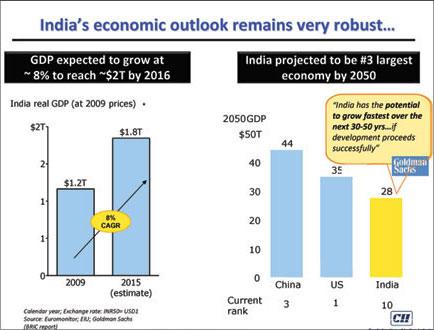
However, the trade body cautioned that the country still faces some significant challenges which could act as impediments to its stellar rate of growth. Some of these challenges include:
Inflation: There is an urgent need to get inflation under control; monetary policy cannot be the only instrument when the drivers are food, fuel and commodities.
Global developments: Developments in European Union, Greece especially, highlight the fact that global conditions will remain volatile for some time; excessive dependence on foreign capital inflows is not recommended for India.
Exchange rate: Currency fluctuations being driven by external conditions will have an impact on the real sector; important role for the Reserve Bank of India in preventing excessive volatility.
Trade prospects: Improving with stabilisation in the global economy but growth in developed economies will remain weak in the near term; need to diversify markets.
. . .
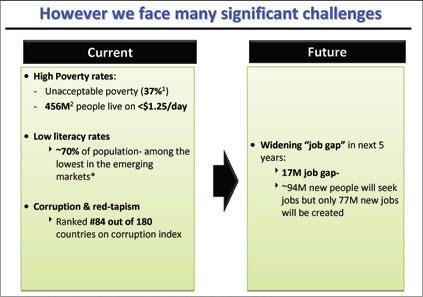
The CII presentation laid out a ten-point agenda for 10% growth by 2010:
1. Achieving 4% sustained agriculture growth
The CII said that there is virtual stagnation in agriculture due to:
The trade body believes that the following needs to be done to achieve higher farm growth:
. . .
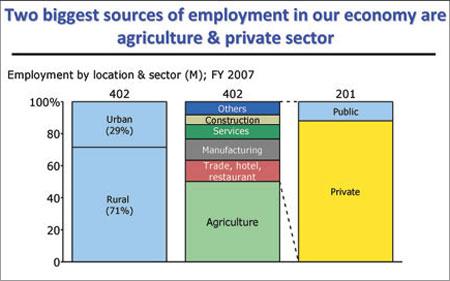
2. Achieving 11-2% long-term manufacturing growth
India's economic policy addresses these issues therefore, but this needs quick enactment.
Every additional 1% growth in manufacturing creates 20-30 million additional jobs.
Need to develop strengths in labour-intensive sectors such as textiles, consumer electronics, furniture and industrial machinery.
. . .
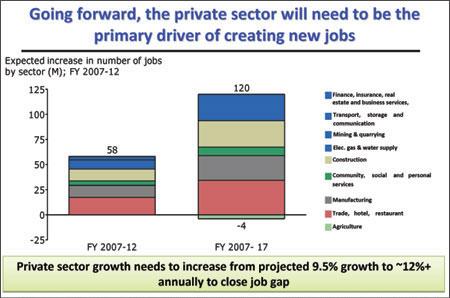
3. Taking services to the next level
Key policy changes required in services sector include:
4. Creating world class infrastructure
. . .
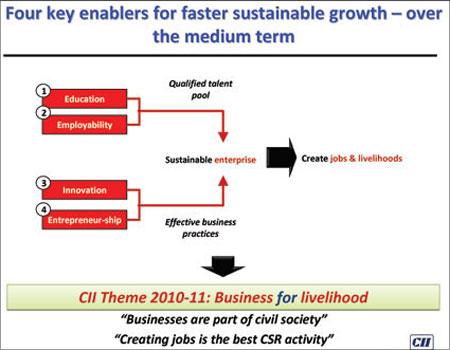
5. Education
The CII said that CII in partnership with the government of India will set up 30 industry-academia innovation centres across the country. The trade body will also establish 10 new skill development centres during the course of the year to enhance employability.
The CII added India suffers from high poverty, illiteracy and joblessness. This, it said, would lead to a millions of Indians being unemployed, considering that in the next five years 94 million people will be in the job market while there will be only be an estimated 77 million created during the period.
. . .
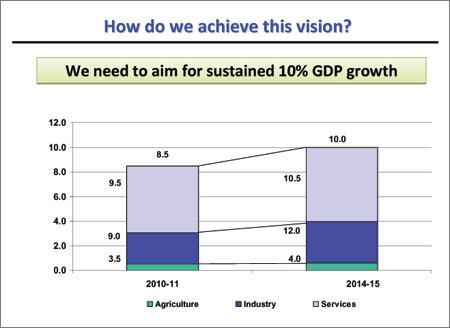
6. Develop skills to boost employment
The private sector and the agriculture arena make up for most of the jobs that are created in the Indian economy currently, and emphasised the need for the private sector to become the main employer in the coming years so as to narrow the widening job gap. However, for this to happen, said the CII, the private sector needs to grow at over 12 per cent year-on-year as compared to the projected growth rate of 9.5%.
The CII presentation said that the main 'enablers' for faster, sustainable and inclusive growth in the medium term include a) education, b) employability (these will help generate a qualified talent pool), c) innovation, and d) entrepreneurship (these will help create more jobs). CII believes that these four key enablers would help achieve the desired quality of growth.
. . .

7. Conducive labour policy to create employment
Objective
Policy imperatives
. . .
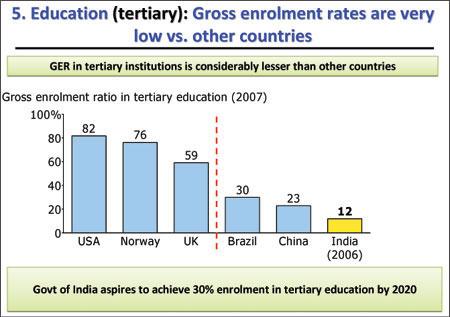
8. Improving government delivery systems
. . .
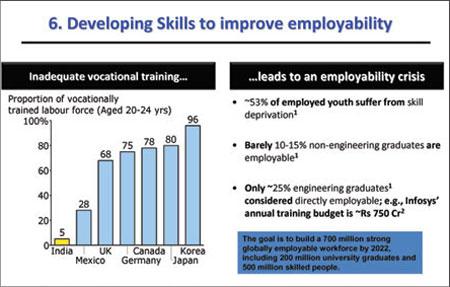
9. New urban centres as growth poles
Structural challenges driven by nature of urbanization in India, i.e. unprecedented scale, high density cities and predominantly brownfield.
Policy limitations: Private participation and urban local bodies functioning with poor execution capabilities.
Administrative problems: Municipalities are overburdened resulting in poor levels of service delivery.
. . .

10. Financing high growth
. . .
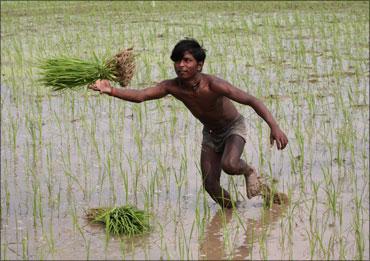
In a nutshell:
1. Agriculture needs to grow at a sustained rate of 4%.
2. Manufacturing needs to register 11-12% long-term average growth.
3. Service sector needs to remain robust and a growth driver.
4. Physical Infrastructure needs to be of global standards.
5. Education would have to be the centre of reforms.
6. Skill development would need a massive step up.
7. Labour environment and rules need to be conducive to employment creation.
8. Delivery mechanisms of government need to be streamlined.
9. Need new urban centres to come up as growth poles.
10. The financial sector reforms need to be fast tracked to enable financing of a high growth, large economy -- particularly focussing on long-term funding instruments and financial inclusion.